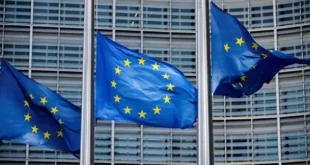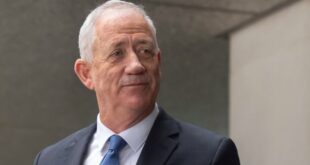Japan’s PM deliberately chose city levelled by nuclear bomb to host summit.

The shadows of two previous, brutal wars — and the potential consequences of one raging in Eastern Europe — hung over Prime Minister Justin Trudeau as he arrived Thursday in Japan for the opening of the G7 leaders summit.
The day began in South Korea with a commemoration and a steep hike along a newly constructed trail in Kapyeong, the scene of the April 1951 battle of Kapyong, the first desperate fight involving Canadian soldiers during the Korean War.
The day ended in Hiroshima, Japan, the city obliterated by an atomic bomb in August 1945 in the world’s first use of a tactical nuclear weapon by the United States.
Japanese Prime Minister Fumio Kishida deliberately chose his hometown as the venue for the Group of Seven leaders meeting to highlight the risk the world faces today of a nuclear confrontation. Russia has threatened on more than one occasion to use tactical nuclear weapons in its war in Ukraine.
Trudeau’s tightly scripted visit to Kapyeong, about 50 kilometres northwest of Seoul, saw him open a so-called peace trail on the rugged landscape of the former battlefield. The hiking trail connects former Canadian positions and ends at the summit of Hill 677, which was the strategic position Chinese troops tried to overrun during a drive to take Seoul, the South Korean capital.
The offensive was halted by the Commonwealth brigade, which was made up of Canadian and Australian troops, supported by U.S. tanks.
“It’s a very important battle at a very key juncture of the war,” said Andrew Burtch, a historian at the Canadian War Museum. “If it had gone poorly, it might have meant very different results for South Korea and that’s one of the reasons it’s been so remembered in terms of the broader importance to Canadian military history.”
More than 500 Canadians killed in Korean War
The prime minister’s visit on Thursday is significant because, unlike European battlefields, few Canadian politicians have walked the ground in Korea. Throughout the Korean War, 516 Canadians lost their lives, including 10 at Kapyong.
“It’s a stretch of ground that hasn’t been as well documented, perhaps as other battles — admittedly costlier battles during the First and Second World Wars, but still it resonated long after the guns stopped firing,” said Burtch.
This year marks the 70th anniversary of the armistice that ended the Korean War, a fact that also makes Trudeau’s brief sojourn on the trail important. He took part in a brief wreath-laying ceremony before hiking the trail to the top where he mingled with some students from a Canadian curriculum private school, CMIS Canada.
Reminders of another, more devastating, war were evident when Trudeau touched down in Hiroshima where nuclear disarmament is almost considered an article of faith, especially for Japan’s prime minister.
“Kishida is walking a fine line,” said Chris Johnstone, an expert in Japan at the Washington-based Center for Strategic and International Studies.
“He recognizes the need for the nuclear umbrella, Japan’s dependence on U.S. extended deterrence; that that’s more vital than ever, frankly, in the current security environment, but he still does uphold this vision, if you will, of a world without nuclear weapons.”
Many of the survivors of the atomic bombing have told Japanese media that they hope the leaders of the western democracies will change their perception of nuclear weapons by walking the ground where they were used.
Roland Paris, an international affairs professor at the University of Ottawa, said the world is in a precarious state as many of the arms control agreements that kept the potential use of nuclear weapons in check have withered away.
“A lot of those mechanisms that help to stabilize the nuclear world since the Cold War, during the Cold War, those mechanisms have been eroding,” Paris said.
“Those nuclear arms control agreements have been falling by the wayside. There’s been more and more nuclear, saber rattling.
“I think that the fact that this summit will be held in Hiroshima will have great symbolic significance.”
If anything, Paris said, the G7 Summit could provide momentum to renegotiate some of those agreements that have fallen by the wayside.
ABOUT THE AUTHOR

Senior reporter, defence and security
Murray Brewster is senior defence writer for CBC News, based in Ottawa. He has covered the Canadian military and foreign policy from Parliament Hill for over a decade. Among other assignments, he spent a total of 15 months on the ground covering the Afghan war for The Canadian Press. Prior to that, he covered defence issues and politics for CP in Nova Scotia for 11 years and was bureau chief for Standard Broadcast News in Ottawa.
*****
Credit belongs to : www.cbc.ca
 Atin Ito First Filipino Community Newspaper in Ontario
Atin Ito First Filipino Community Newspaper in Ontario






